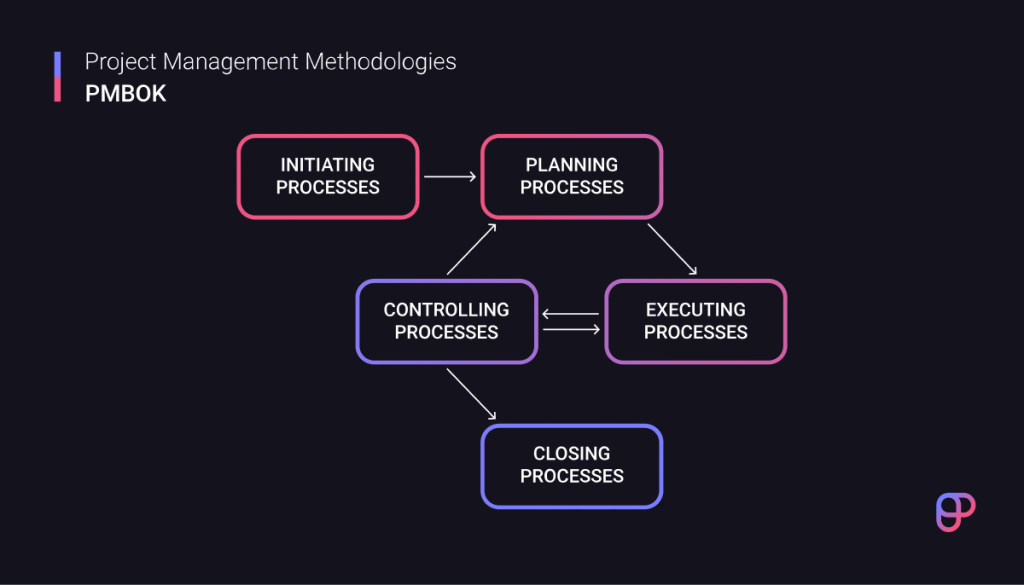Minimalist Organization in Projects: How Simplifying Processes Increases Efficiency and Collaboration

Unlocking Efficiency Through Minimalism
In today’s fast-paced work environment, project management can often become overwhelming. Teams juggle countless tasks, complicated processes, and a barrage of communication, which can stifle productivity. Minimalist organization offers a compelling solution by streamlining workflows and enhancing collaboration.
By embracing a simplified approach, organizations can experience a myriad of benefits, such as:
- Improved Clarity: Fewer moving parts lead to better understanding among team members. For example, a project with clearly defined roles and fewer steps allows employees to know their responsibilities without confusion.
- Enhanced Focus: Simplifying tasks helps teams prioritize their efforts effectively. When teams dedicate their time to fewer critical projects, they can concentrate their resources and energy on delivering exceptional results. A study by Harvard Business Review highlights that teams working on fewer concurrent projects often achieve higher quality outcomes.
- Faster Decision-Making: Streamlined processes reduce the time it takes to reach consensus. This speed is vital in a competitive business landscape, where timely decision-making can lead to capturing market opportunities.
Minimalist organization isn’t just about decluttering; it’s about reshaping the frameworks that define project execution. Companies like Google and Basecamp have adopted this philosophy, demonstrating how a simplified strategy can foster innovation and teamwork. For instance, Google’s use of Objectives and Key Results (OKRs) allows teams to focus on fewer high-impact goals, thereby minimizing distractions and enhancing engagement.
As we delve into the principles of minimalist organization, we will explore:
- Techniques to simplify processes: Strategies such as Agile methodologies, which prioritize incremental progress, can lead teams to concentrate on essential features and user feedback instead of getting bogged down by exhaustive plans.
- Tools that support collaboration: Platforms like Trello and Asana offer intuitive interfaces that help prioritize tasks visually, aiding teams in managing their workflow with simplicity in mind.
- Real-world examples of successful implementation: Beyond tech giants, small and medium-sized enterprises have also benefited from minimalism. For instance, many startups adopt the Lean Startup methodology, focusing on building minimum viable products (MVPs) to test ideas rapidly and adapt based on user feedback.
Join us on this journey to uncover how simplifying workflows can lead to monumental improvements in efficiency and collaboration. The future of project management may be simpler than you think, and the exploration of minimalism could fundamentally transform the way teams operate. By breaking down barriers and fostering a culture of clarity, organizations can not only enhance productivity but also create a work environment that is more fulfilling and less stressful for everyone involved.

DISCOVER MORE: Click here to enhance your personal organization
Embracing Simplicity in Project Management
As organizations strive to drive results, the complexity of traditional project management methods often becomes a barrier to success. The key to overcoming this hurdle lies in adopting minimalist organization principles, which focus on simplicity and clarity. By refining processes, teams can eliminate redundancies and sharpen their focus on what truly matters.
One of the first steps in implementing minimalist organization is understanding the concept of process mapping. By visually representing a project’s workflow, teams can identify unnecessary steps and bottlenecks that hinder progress. Simplifying these processes not only clears the path for efficient execution but also provides transparency, ensuring that all team members grasp the project’s direction. For instance, using tools like flowcharts or Gantt charts can offer a clear visual guide, allowing teams to see who is responsible for each task and how those tasks interlink within the project framework.
Another essential aspect is prioritization. The ability to determine which tasks are critical and which can be placed on the back burner is vital for maintaining momentum. Techniques such as the Eisenhower Matrix can help teams categorize tasks based on urgency and importance. This approach empowers project leaders to make informed decisions and allocate resources more effectively, maximizing the impact of the team’s efforts. Here’s how this technique works:
- Urgent and Important: Tasks that require immediate attention and have significant consequences if not completed.
- Important but Not Urgent: Tasks that contribute to long-term goals but can be scheduled for later.
- Urgent but Not Important: Tasks that demand immediate action but can be delegated.
- Neither Urgent nor Important: Tasks that are low priority and can be eliminated or deferred.
By concentrating on the essential elements of a project, teams can ensure that their efforts lead to meaningful outcomes. Moreover, the minimalist approach encourages a culture of open communication, where team members feel empowered to share ideas and feedback without fear of overwhelming complexity. This sense of collaboration is further enhanced by leveraging technology available today. Project management platforms like Slack and Asana allow teams to communicate seamlessly and maintain organized threads related to specific projects or tasks, thereby fostering transparency and accountability.
Additionally, minimalism in project management means rethinking the tools and resources utilized. Rather than a daunting array of applications and methodologies, teams can benefit from a streamlined set of trusted tools that fit their unique workflows. This reduction not only decreases the learning curve but can also significantly cut costs, making minimalist organization a strategic choice for organizations of all sizes looking to boost efficiency.
In essence, adopting a minimalist mindset in project management fosters clarity, prioritization, and streamlined communication. These principles are not just buzzwords; they represent a transformative approach that engenders a truly collaborative environment. As we continue our exploration of minimalist organization, we will delve deeper into specific techniques, innovative tools, and real-world examples that illustrate the powerful impact of simplicity on project efficiency and collaboration.
| Advantages | Details |
|---|---|
| Enhanced Focus | By minimizing clutter and distractions, teams can devote their attention to key tasks and goals, leading to increased productivity. |
| Improved Collaboration | Simplified processes create a clear framework for all team members, fostering open communication and unifying efforts across diverse project roles. |
| Time-Efficiency | Streamlined workflows significantly cut down on time wasted in complex protocols, allowing teams to focus on delivering results rapidly. |
| Adaptability | Minimalist frameworks enable quicker adjustments to project direction in response to feedback or changing priorities, ensuring agility and flexibility. |
In today’s fast-paced environment, adopting a minimalist organization approach in projects is becoming essential for businesses aiming to foster collaboration and efficiency. The foundational principle of minimalism focuses on eliminating unnecessary complexities, thereby streamlining processes that often bog down project execution. For example, when tasks are clearly defined and unnecessary meetings or redundant communications are reduced, teams can operate with a laser focus. This clarity not only enhances individual performance but also strengthens group dynamics. When collaboration flows more freely, innovation thrives, as team members feel empowered to share ideas without the weight of bureaucratic procedure weighing them down.Moreover, the adaptable nature of minimalist approaches supports an organization’s ability to pivot swiftly in response to both market shifts and internal feedback. This responsiveness is crucial in maintaining relevance in a competitive landscape where agility is often the key differentiator.Understanding how to integrate these principles into project delivery offers profound implications for success—fostering not only a more productive work environment but also a culture built on trust, creativity, and results-oriented action.
DISCOVER MORE: Click here to dive deeper
Strategies for Implementing Minimalist Organization
As we delve deeper into the realm of minimalist organization within projects, it’s essential to explore strategies that bolster efficiency and collaboration. One of the most effective techniques is adopting Agile methodology, which emphasizes adaptability and quick responses to change. Agile promotes iterative progress, allowing teams to break projects into smaller, manageable units known as sprints. Each sprint culminates in a review, enabling teams to analyze what worked, what didn’t, and how to refine their approach moving forward. This cycle of continuous improvement encourages an environment where feedback is not only welcomed but utilized to enhance processes.
For instance, a software development team employing Agile might utilize daily stand-up meetings to discuss progress and obstacles. This practice promotes transparency and collaboration, as team members are encouraged to voice concerns and share insights in real-time, allowing for immediate adjustments to the project’s trajectory.
Visualization Tools for Clarity
Another strategy involves the use of visualization tools to further streamline communication and organization. Kanban boards, for example, can visually represent work in progress across different stages of a project. By clearly showcasing tasks that are pending, in progress, or completed, teams can easily identify where bottlenecks occur and address them proactively. Visualization not only enhances task management but also fosters an understanding of team workloads, promoting balanced task distribution and reducing the risk of burnout.
Moreover, employing tools like Trello or Monday.com can make it easy for teams to collaborate seamlessly. These platforms allow for real-time updates and visibility, empowering team members to take ownership of their responsibilities and hold one another accountable.
Fostering a Minimalist Culture
It is critical to recognize that minimalist organization is not solely about tools and methods; it also requires cultivating a minimalist culture within the team. This cultural aspect can be initiated by encouraging open dialogue around priorities and expectations, promoting an environment of trust and respect. By fostering discussion, project managers can glean valuable insights from team members on how to streamline processes further.
Another cultural component involves recognizing the value of feedback loops. Establishing regular retrospectives can serve as a platform for team members to reflect on their performance collectively, discuss challenges, and celebrate successes. This not only reinforces a sense of shared responsibility but also supports a commitment to minimalism in ongoing projects.
Streamlined Decision Making
Finally, effective decision-making plays a pivotal role in minimalist project organization. Empowering team members to make decisions within their areas of expertise eliminates bottlenecks created by waiting for approvals and fosters quicker action. For instance, delegating decision-making authority regarding minor task adjustments or resource allocation can significantly accelerate project timelines, keeping teams agile and focused on their key deliverables.
To support this, teams can utilize the RACI matrix (Responsible, Accountable, Consulted, and Informed) to outline roles and responsibilities for every task. This clarity can mitigate confusion and promote swift decision-making while ensuring that all voices are still heard, thus enhancing overall collaboration.
As organizations implement these strategies, the transformative power of minimalist organization becomes evident. Each effort to simplify not only increases efficiency but also enhances collaboration among team members, paving the way for innovative solutions and a more productive work environment.
DISCOVER MORE: Click here to learn about prioritization in minimalist living</
Conclusion: Embracing Minimalism for Project Success
In conclusion, the principles of minimalist organization in projects serve as a powerful antidote to the complexities that often hinder productivity and collaboration. By adopting strategies such as Agile methodologies, utilizing visualization tools, and fostering a culture that emphasizes simplicity and clarity, teams can streamline their processes effectively. These approaches not only promote efficiency but also encourage greater collaboration among team members, transforming the project landscape into a more cohesive and dynamic environment.
In today’s fast-paced business climate, where adaptability is paramount, organizations must prioritize minimalism as a way of working. With tools like Trello and Monday.com, team members are empowered to navigate their responsibilities with clarity, while regular feedback loops ensure that every voice contributes to the project’s success. Moreover, by simplifying decision-making processes through frameworks like the RACI matrix, organizations can mitigate confusion and enhance team autonomy.
Ultimately, it is the embrace of a minimalist culture that holds the key to sustainable project success. When teams are encouraged to focus on what truly matters — their goals and deliverables — they become more capable of responding to challenges and seizing opportunities for innovation. As organizations continue to refine their approach to project management, the lasting benefits of a minimalist organization will pave the way for not only higher efficiency but also a thriving collaborative spirit that drives results. To learn more about effective strategies and tools in this domain, consider exploring the vast array of resources available that can help your team embark on a transformative journey toward minimalism.


